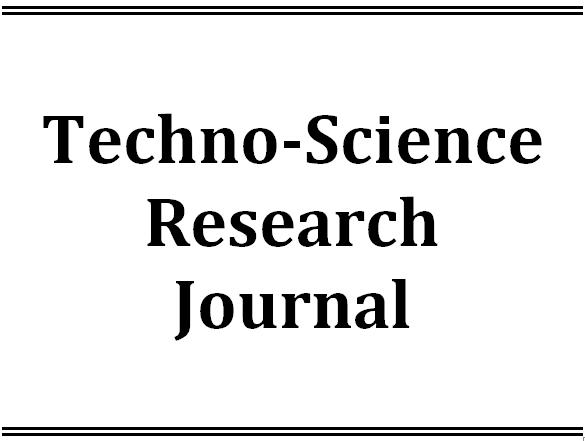Latest Issue
Empowering Education with Online Khmer Handwritten Text Recognition for Teaching and Learning Assistance
Published: August 30,2025Undergraduate Student Dropout Prediction with Class Balancing Techniques
Published: August 30,2025Status of Seawater Quality at Koh Rong Island, Sihanoukville, Cambodia
Published: August 30,2025Low-Complexity Detection of Primary Synchronization Signal for 5G New Radio Terrestrial Cellular System
Published: August 30,2025Word Spotting on Khmer Printed Documents
Published: August 30,2025Tuning Hyperparameters Learning Rate and Gamma in Gym Environment Inverted Pendulum
Published: August 30,2025Examining Passenger Loyalty in Phnom Penh Public Bus System: A Structural Equation Modelling Approach
Published: August 30,2025Prediction on Load model for future load profile of Electric Vehicle charging demand in Phnom Penh
Published: August 30,2025Economic Study on Integrating PV-DG with Grid-Tie: Case Study in Cambodia
Published: August 30,2025Effects of Cambodian Clay on the Physical and Mechanical Properties of Natural Rubber Latex Foams
-
1. Faculty of Georesources and Geotechnical Engineering, Institute of Technology of Cambodia, Russian Federation Blvd., P.O. Box 86, Phnom Penh, Cambodia
Academic Editor:
Received: July 19,2021 / Revised: / Accepted: July 19,2021 / Available online: December 30,2021
Natural rubber (NR) is often compounded with inorganic fillers such as clay to broaden its applications, reduce the production cost, and also to impart good mechanical properties. In this study, the effect of local clay on physical and mechanical properties of Cambodian clay-filled natural rubber latex foams was investigated. The natural rubber latex foam was produced via the Dunlop method through the conventional vulcanization system with sulfur as the crosslinking agent. The clay loading was varied at 5, 10, 15, and 20 parts per hundred rubber (phr). The preliminary tests of raw natural rubber latex for pH, alkalinity, total solids content (TSC), dry rubber content (DRC), and the volatile fatty acid number (VFA no.) were carried out according to ASTM standard with all the results comply with the accepted value according to the standard. Clay was characterized for mineral compositions using X-ray fluorescence. The particle size distribution analysis showed that clay has diameter ranging from 0.262 to 19 micrometers, suggesting a classification of semi-reinforcing filler. The results of the physical properties showed a considerable decrease in porosity and swelling while the bulk density, true density, compression set, and hardness were significantly increased. Tensile strength exhibited significant increase at high clay loading similar to the elongation at break, whereas tear strength showed significant improvement at the maximum of 15 phr and start to decrease at 20 phr loading. Thermal aging also demonstrated a significant deteriorating effect on the latex foam due to chain scissions, which reduces mechanical strengths but increases in the hardness value. The results, therefore, validate that clay filler incorporation with NR latex provides some reinforcement on the properties of NR latex foam mostly at high clay loading.

